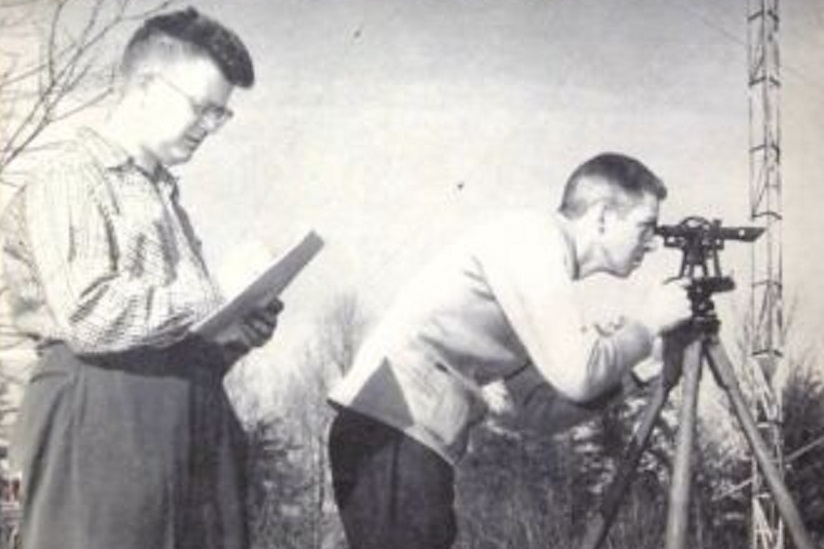 Shown here, on the cover of the March 1953 issue of QST, are W4AO and W3GKP, carefully aligning the W3GKP antennas in preparation for bouncing their 144 MHz signals off the moon.
Shown here, on the cover of the March 1953 issue of QST, are W4AO and W3GKP, carefully aligning the W3GKP antennas in preparation for bouncing their 144 MHz signals off the moon.
The feat had been accomplished by the U.S. military a few years earlier, but it was much more challenging with amateur power levels of 1000 watts. The first echoes came in 1950, but the two hams kept the early results under wraps and continued until a definitive echo was shown, which happened in early 1953, on 144 MHz.
The details of the operation were carried in that issue of QST. That first EME (Earth-Moon-Earth) or “Moonbounce” signal required a great deal of technical expertise, but both technical innovation and collective experience have made the feat much more achievable, with many stations logging more than 100 countries. For an idea of the relatively minimal amount of equipment now needed, see W5RZ’s 2016 article about portable EME from a park, in which he made contacts with Europe by bouncing signals off the moon from an antenna strapped to a charcoal grill.
